How to know if you have a fake Logbook?
Fake Logbooks
MyVehicle.ie is highlighting an increased risk for used car buyers, that is the existence of fake VLC Certificates or logbooks as they are otherwise known.
Unsuspecting motorists can send the Vehicle Licensing Certificates (VLC / Logbook) of the second-hand vehicle that they recently purchased to the Department of Transport, only to have the Gardai call around to inform them that the car they bought is actually a stolen vehicle.
To the shock of the unsuspecting buyer, the vehicle is repossessed immediately losing the car and the money they paid for it. If the ‘seller’ lets the buyer keep the VLC that should ring alarm bells too – the seller should always send it to the NVDF themselves.
Car criminals are becoming more and more sophisticated in their forging abilities when it comes to faking Vehicle Registration Certificates (VLC).
Their key objective is to shift stolen cars and to do this, they need to match the identity of the stolen car they are selling to what seems to be a genuine certificate.
Some of these forgeries can be very convincing but there are some tell-tale signs to look out for to ascertain that the certificate is not a fake.
REAL 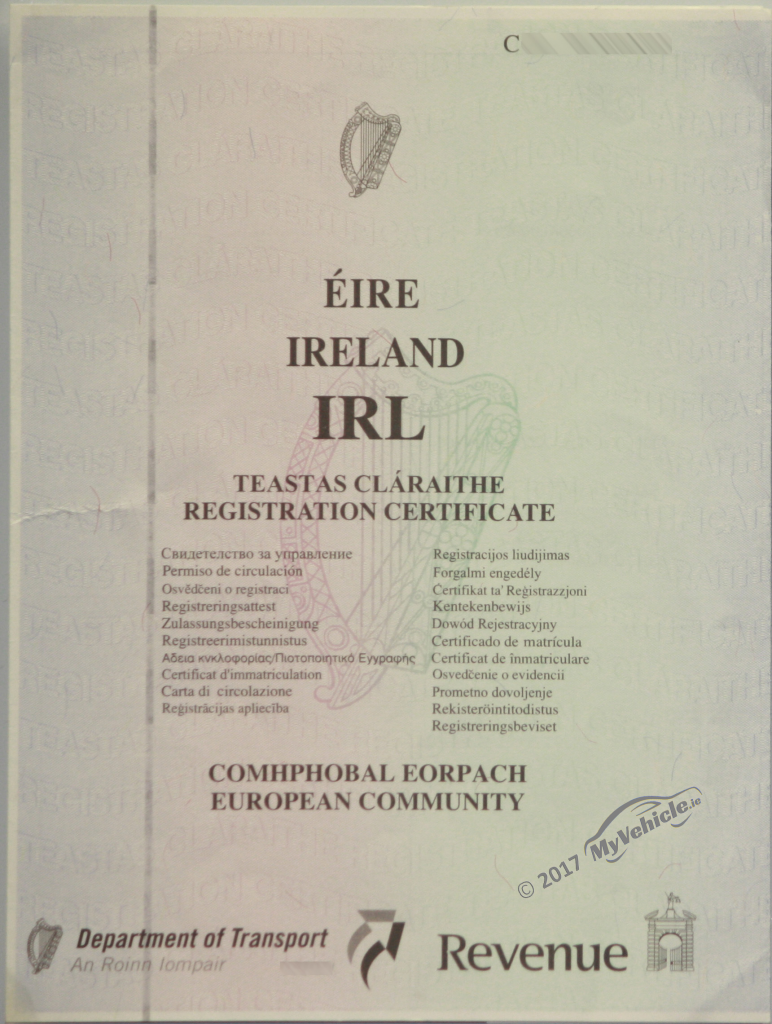 |
FAKE 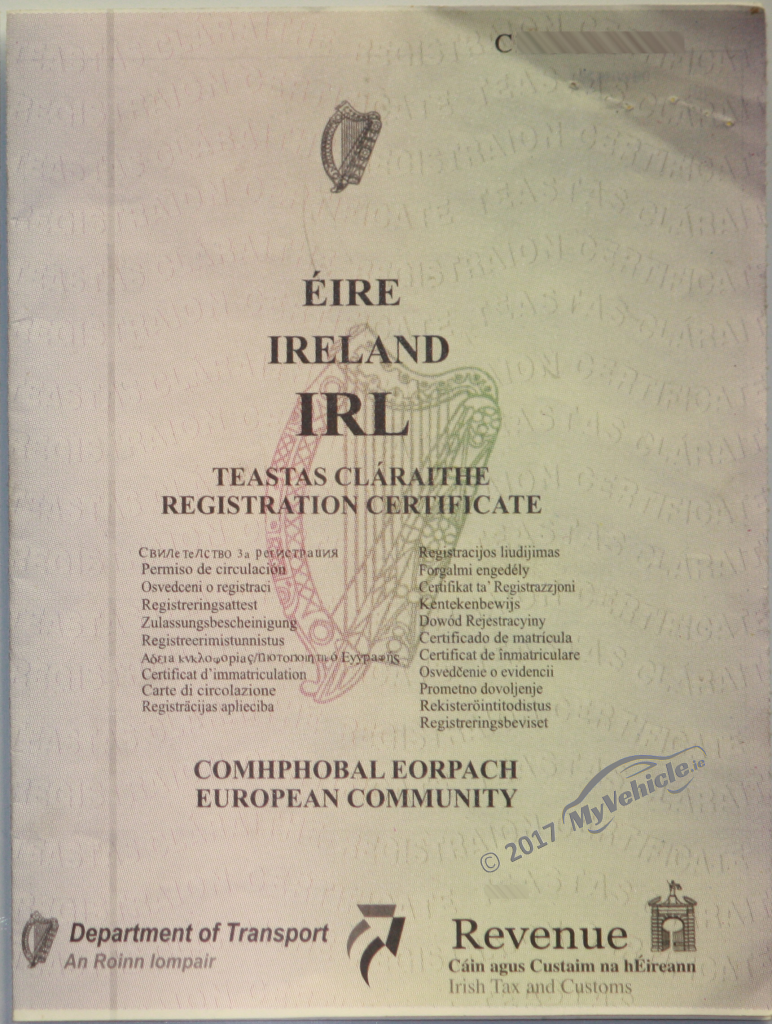 |
As you can tell, it can be hard to spot the difference on the first casual look.
Security thread watermark
First off, there are two easy ways to determine if the VLC is genuine or not.
Open up the document and hold it up to the light. You will clearly see a dashed line, security thread between page one and two. This thread says “TEASTAS CLARAITHE” in small writing and in negative on the dashed parts. On the fake document below you can clearly see there is no security thread running through the forged certificate:
REAL 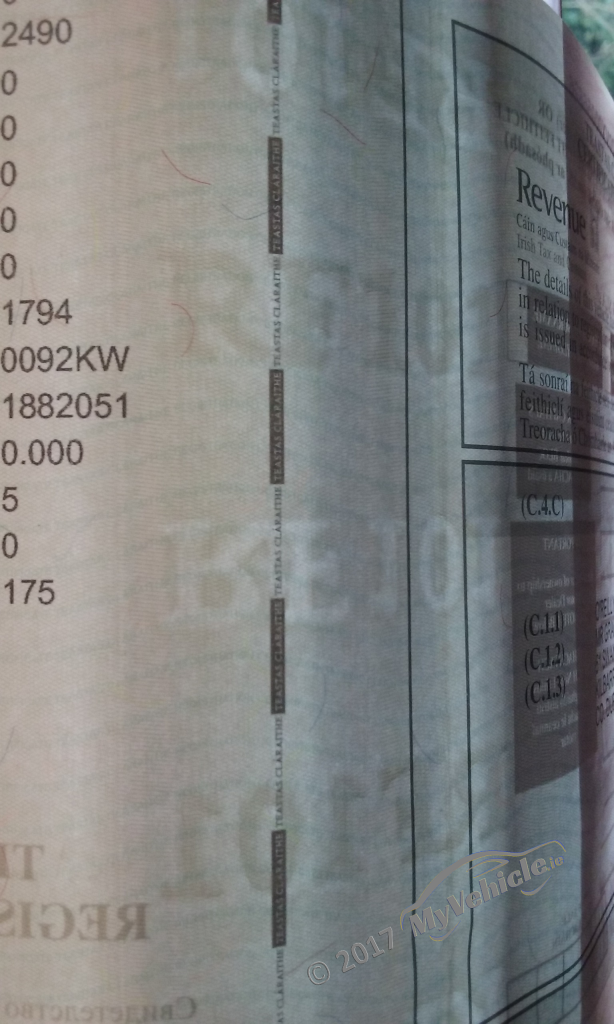 |
FAKE  |
Thermochromatic ink circle
The second easier way but possibly less reliable is to turn to the back page of the VLC and look for the colour changing thermochromatic ink circle on the signature line. This special ink changes colour from purple to white when you rub the circle. (see below). When you place your finger on the circle for about five seconds the thermochromatic spot should have turned a white or lilac colour. One caution though: this may not work in cold places or it might not work if some genuine certificates are not printed out right. 
Example of real thermochromatic ink circle above.
REAL 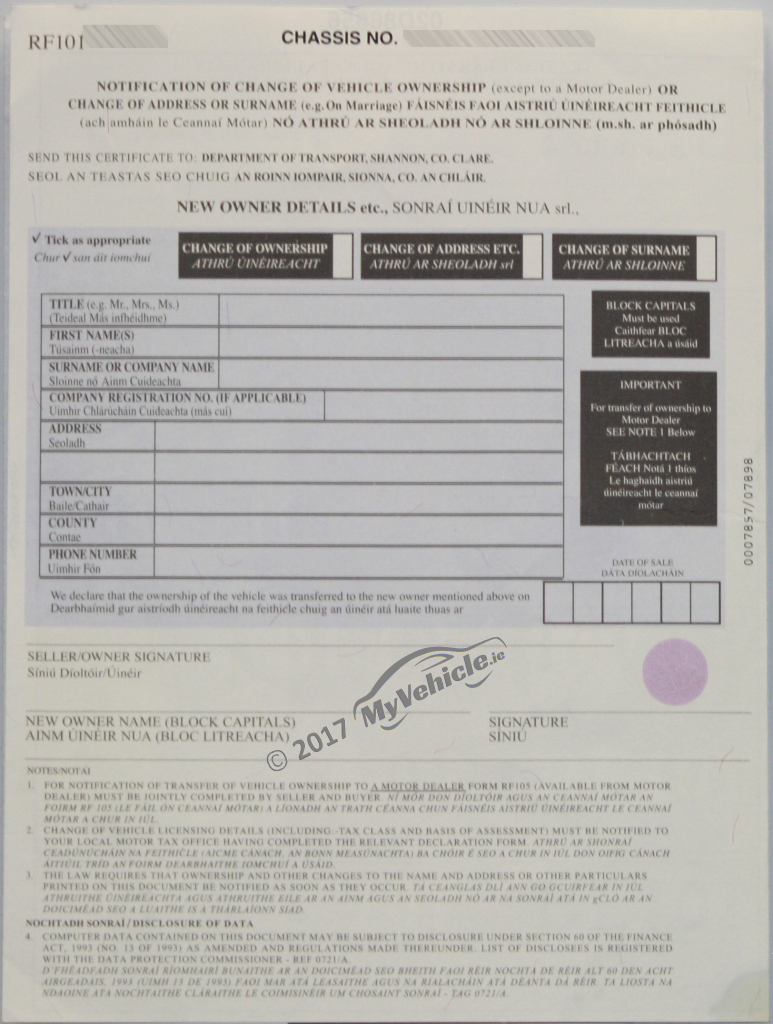 |
FAKE 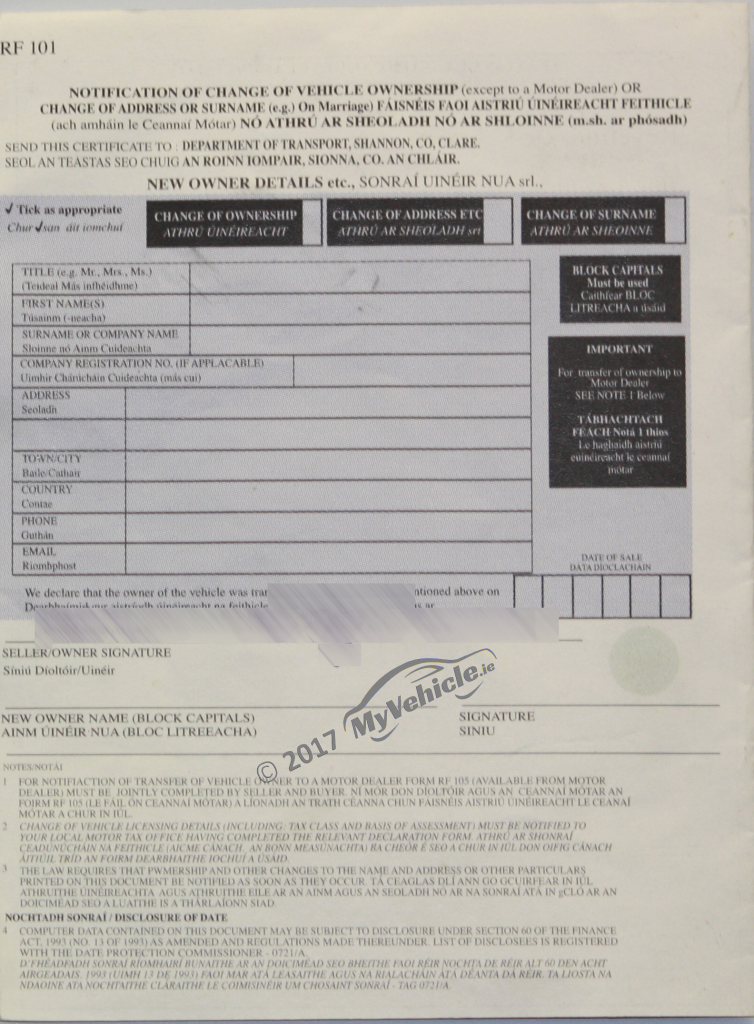 |
There are a few other ways to check if the Vehicle Licensing Certificate is a fake or not but never feel pressured into buying a car. Take the time to do a detailed MyVehicle.ie Car History Check Report.
One of the best ways to decide if a VLC is genuine is to check the certificate’s serial number which can be verified by the last three digits disclosed within the MyVehicle.ie History Check Report. 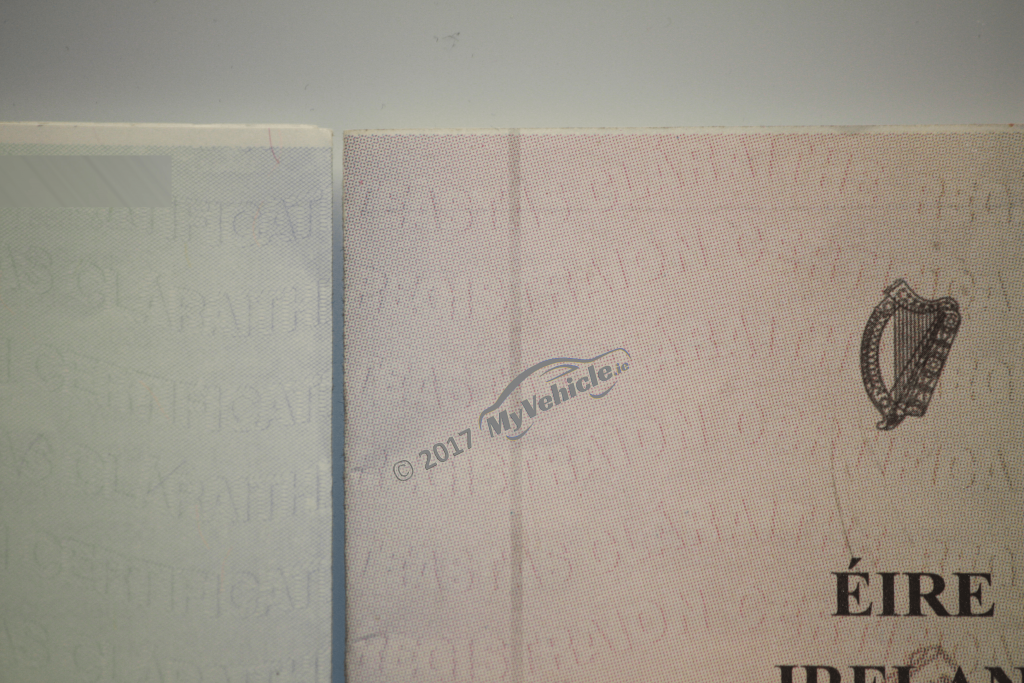
Real on left and fake on the right. Notice the colour differences and the more prominent text on the fake.
Do Your Research:
- Decide on the exact make and model you want.
- Find out locations of VIN numbers on that particular model.
- This 17-digit VIN Number will be stamped into the body of the vehicle.
- Conduct a Full Car History Check through MyVehicle.ie
- Bring a mechanic or person with some knowledge of cars or motorcycles
Documentation:
- Are Insurance discs displayed?
- Are tax discs displayed? If not, why not? Do not be afraid to ask.
- Does the registration details on the tax/Insurance disc correspond to the registration number of the vehicle? Check for forgeries.
- Is he/she the registered owner? if not, why not?
- Check that the VLC appears genuine. Are all the watermarks in place?
- Does the Chassis number on the registration document correspond to the chassis number stamped on the vehicle?
- Is there documentary evidence to support the service history?
- Can you find a dealer in the service history that will support the car’s history?
Registration plates:
- Do the registration plates look newer than the vehicle?
- Are there too many screw holes in the registration plates?
- Have they been taken off at some stage? If so, ask why.
Windows:
- Dealer’s love advertising. Have original garage stickers been removed?
- Are Registration numbers etched underneath stickers?
- Are correct numbers etched on windows?
Vehicle Identification Number:
- Look for VIN number stamped in the chassis.
- Does it match the registration document?
- Does it show signs of interference?
- Has the VIN plate been removed? If so why?
Check engine number:
- Does it show signs of interference?
- Does the engine number match what is on the vehicle registration document?
FINAL ADVICE:
- Do your due diligence
- Be sure before you buy.
- If it’s stolen, you will lose the vehicle.
- If it’s stolen you will lose the money you paid for it.
- Never be pressured into buying.
- Never pay cash and always get proof of purchase.
- If you suspect that the car is stolen, contact your local Garda Station
- Finally, the ‘Caveat emptor’, let the buyer beware!
Author

Justin Kavanagh
Justin Kavanagh is a recognised leader
in automotive intelligence and vehicle
data supply to the entire motor industry.
He has almost 20 years experience in
building systems from the ground up.
As the Managing Director of Vehicle
Management System, he understands the
need and importance of trustworthy and
reliable vehicle history and advice to
both the trade and the public.
Follow me on LinkedIn
